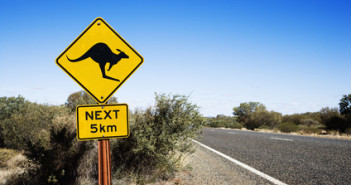The Australian sharemarket is set to open higher on Monday buoyed by a strong finish to US markets on Friday. The Dow Jones rose 0.8%, the S&P 500 0.7% and the Nasdaq finished up 0.7% as a result of positive earnings from companies such as Caterpillar and 3M during the US reporting season.
The Aussie market actually had its biggest weekly gain since February bouncing back from a recent slump as positive data such as the latest inflation figures came in largely as expected. Australian Bureau of Statistics data shows inflation came in at 2.3% for the September quarter showing the Australian economy is still moving ahead.
With no major Economic news due out of Australia this week Investors will be keeping an eye on earnings reports from the major banks. NAB’s full year results are due on Thursday while ANZ and Macquarie Bank release their earnings on Friday. This news will have a profound effect on the local sharemarket as the banks make up a big part of the local index.
Guest Post by Andrew Masters from FiboGroup
While Australian stocks should make decent gains on Monday, AMP Capital chief economist Shane Oliver said the results of stress tests for European banks on Sunday night could affect market confidence. Expected to be favourable or at least reasonable, the results could help our market, he said. “It will remove the cloud hanging over the European banking system for the last year, which had adversely affected confidence in most Australian investors,†Dr Oliver said.
The Australian dollar finished higher on Friday closing at US87.94 cents up from US 87.43 cents the previous week boosted by positive economic data out of China. GDP numbers from China, Australia’s largest trading partner came in ahead of analysts’ expectations. Chinese growth for the September quarter came in at 7.3% against a consensus of 7.2% showing the local economy is still chugging along. The GDP data has been monitored closely for signs on whether the Chinese government will pump further stimulus into the economy to help with a slump in the property market and a slowdown in credit growth. Late last week, media reports said China’s central bank is planning to inject 200 billion yuan (USD 32.6 billion) into the banking system, its latest targeted easing in recent months. This healthy GDP number may question the amount of money needed to stimulate the economy.
The HSBC China Manufacturing PMI came in at 50.4 up slightly from 50.2 in the final reading for September.
Market Economics managing director Stephen Koukoulas said the mildly positive response from markets was a sign of relief that the numbers were not worse.â€China is still growing at a decent to good pace, which is a marked difference to the mixed news coming out of the US and the unambiguously bad news out of the Europe,â€Â he observed. Other Chinese figures released today were more of a mixed bag, according to Mr Koukoulas.
Analysts from Fibogroup believe the Australian currency will be driven by external factors this week starting with the results on Sunday night of the stress tests from European banks, which will show the current strength of the banking system. Out of the US, we will see the latest GDP figures and the latest durable goods report, which is a key indicator on consumer spending for big-ticket items such as household appliances and motor vehicles. The US Federal Reserve will release its latest Interest rate decision and although the consensus is for rates to stay on hold Investors will listen closely to the accompanying monetary policy statement for signs on the possibility and timing of an interest rate rise.



